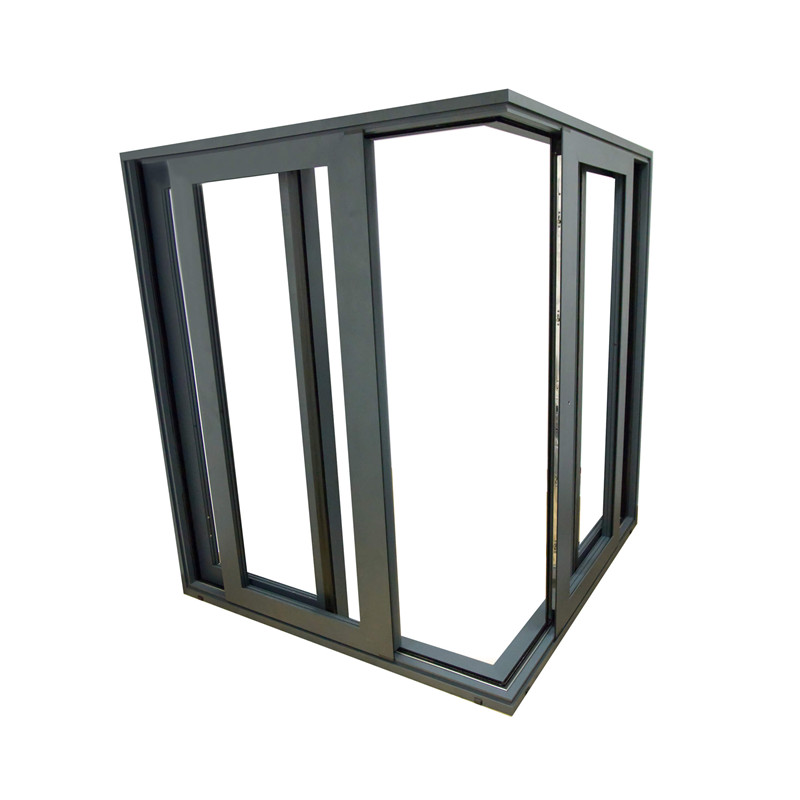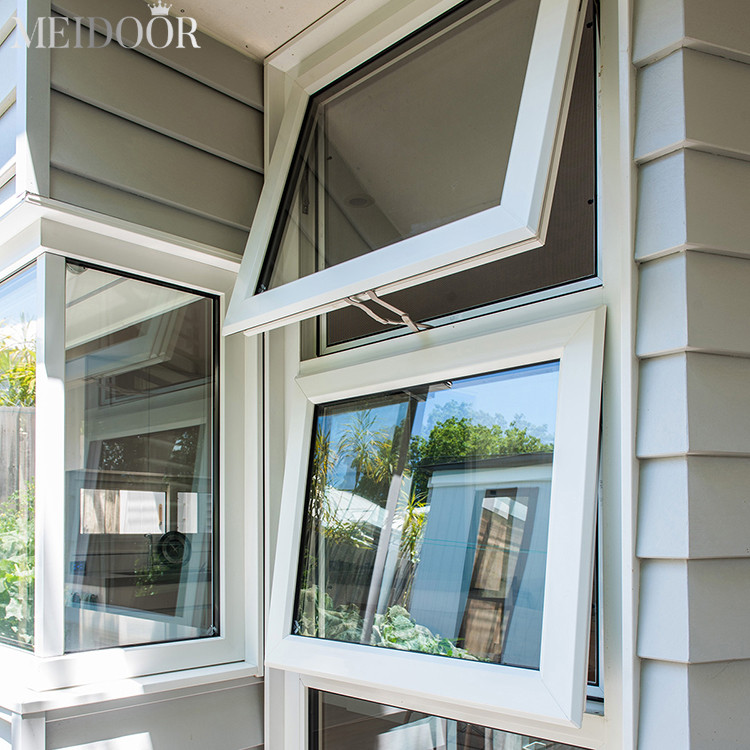MetroHealth Cleveland Heights Behavioral Health Hospital: The exterior uses smooth, monarch bricks with scratched, modular bricks, varying colors, and bonding patterns, metal panel accents, and anodized aluminum curtain wall systems with tinted glazing. These solutions allow the building to seamlessly tie into the existing Cleveland Heights Medical Center Building while also creating a distinctive entrance for the new hospital.
MetroHealth Cleveland Heights Behavioral Health Hospital: Wood accents and a neutral palette backdrop accentuates pops of aqua, soft teal, and dark blues in signage, accents, and furnishings to create an inviting lobby. The space facilitates a discreet and efficient screening process with a check-in and security desk located adjacent to the multi-zone waiting area. Personal belongings are securely stored in locked cabinets after passing through the screening area, allowing for safe interactions and a secure environment during visitation. Aluminum Balcony Railing

MetroHealth Cleveland Heights Behavioral Health Hospital: Each unit has open common areas for patient socialization and dining with clear sight lines from all caregiver areas. Soft teal accents and nature-themed murals help to define the space. Furnishings were chosen to create a casual and less institutional atmosphere with lively colors and comfortable configurations. Dining and lounge furniture features solid, molded designs, and weighted bottoms help to reduce safety risks for patients and staff. This area serves as a welcoming and relaxing place where patients have the ability choose between several different space types, from quiet zones to more socially interactive ones, all while being safely and discreetly monitored by healthcare providers.
MetroHealth Cleveland Heights Behavioral Health Hospital: A total of 112 private and semiprivate patient rooms are divided among the six patient units. Each room was designed with carefully laid out, angular walls to maximize lines of sight for caregivers from the corridor. Psychiatric security windows are equipped with integral blinds to allow patients a level of control over their environment by giving them the ability to allow more or less natural light into their room without creating ligature risks.
MetroHealth Cleveland Heights Behavioral Health Hospital: Each unit was designed with shared caregiver and support spaces as the core surrounded by patient rooms and common treatment spaces on the perimeter of the building to take advantage of natural light in patient spaces.
MetroHealth Cleveland Heights Behavioral Health Hospital: Patients have the ability to choose how to spend their time within the unit outside of their rooms. In addition to the larger common areas, smaller spaces, including a TV viewing area and game room, provide additional options for recreation and socialization while still being visible from the caregiver areas.
MetroHealth Cleveland Heights Behavioral Health Hospital: A calming blue and soft teal color palette and a large mural depicting a tranquil waterfall create a relaxing and healing atmosphere for patients to receive treatment. Interior design choices were made to appeal to a variety of patient demographics as the hospital provides services for a diverse patient population. The corridor was purposely designed with angular walls that allow views to the far end from the caregiver workspace.
The MetroHealth System in Cleveland set out to consolidate behavioral health services on its Cleveland Heights, Ohio, campus. It engaged the design-build team of architect Hasenstab Architects (Cleveland), general contractor The Albert M. Higley Company (Cleveland), and developer Anchor Health Properties (Charlottesville, Va.).
The team designed and built a 79,200-square-foot behavioral health hospital that accommodates five patient units and 100 patient beds.
The new hospital includes adult, geriatric, and adolescent units for behavioral health and addiction care with appropriate on-unit treatment and program space. This includes a shared recreational room and secure exterior courtyard with a half basketball court.
The facility helps to fill a critical community need for psychiatric health services in surrounding areas.
Each unit includes two group rooms, consult rooms, treatment planning, and quiet rooms. Quiet and noisy social spaces, including a multipurpose dining space, provide areas for patient interaction and recreation.
Flexibility was also a goal for this facility. The team designed universal units that all allow for a variety of patient types and diagnoses based on current patient populations. The universal design also gives staff flexibility and the potential to work in different units, when necessary, by creating familiarity with unit setup and layout.
The patient units were designed to provide clear sight lines for patient and staff safety, as well as numerous opportunities for therapeutic interaction. Curved nurses’ stations allow for enhanced visibility of the patient wing and social and dining areas. The open workstations feature a taller, deeper profile to maintain safety and security for staff while promoting patient interaction.
The overall design allows for flexibility in managing patient security and circulation, while creating a calm and healing environment which is paramount to behavioral health facilities. Shared staff support areas between units maximize efficiency and, more importantly, provide the ability for immediate staff reaction for supporting codes and calls for assistance.
(To read about the new MetroHealth Glick Center and its transformation of the organization’s main campus, go here.)
A key consideration for the interior design was creating calming, healing environments that would appeal to a variety of patient groups and ages. This was achieved with strategically placed soft teal and deep blue accent colors and nature-inspired artwork and imagery depicting meadow and forest themes.
These interior design elements served a dual purpose by creating an environment that supports wellness and enhances wayfinding and branding. Specific colors and nature symbols are used at unit, group area, and patient room entries to differentiate those spaces versus staff areas.
Materials, such as vinyl sheet flooring with minimal seams and seamless resinous flooring, were chosen not only for patient and staff safety, but also for durability and ease of maintenance.
One of the major project goals was to incorporate opportunities for patient choice into the design. Within the observable open treatment space, smaller, private social areas are carved out to provide patients with a choice in where and with whom they socialize, all while maintaining clear sight lines and observation from the nurses’ station. The ability to choose gives patients autonomy and supports overall wellness.
Additionally, this project included renovations to approximately 21,219 square feet of space in the existing facility. The renovations added a 12-bed combined psych-med and psych intensive care unit (ICU), an outpatient partial hospitalization program/intensive outpatient program, and appropriate clinical support space.
The psych ICU serves as a high-acuity unit for patients requiring specialized care. The clinical support space includes physician offices, a behavioral health administrative office, resident program support, staff training center, and a staff lounge/support space.
The project also created a psychiatric admissions and intake area adjacent to the emergency department.
Total building area: 79,200 sq. ft. (addition); 21,219 sq. ft. (renovation)
Total construction cost: $29.8 million (addition, including connector and site development); $3.3 million (renovation work)
Cost/sq. ft.: $377/sq. ft. (addition, including connector and site development); $156/sq. ft. (renovation work)
Architecture firm: Hasenstab Architects Inc.
Interior design: Hasenstab Architects Inc.
Construction Manager: The Albert M. Higley Co.
Engineering: Karpinski Engineering (MEP), Thorson Baker + Associates (structural), Wohlwend Engineering (civil)

Tilt & Turn windows © 2023 Emerald X, LLC. All Rights Reserved